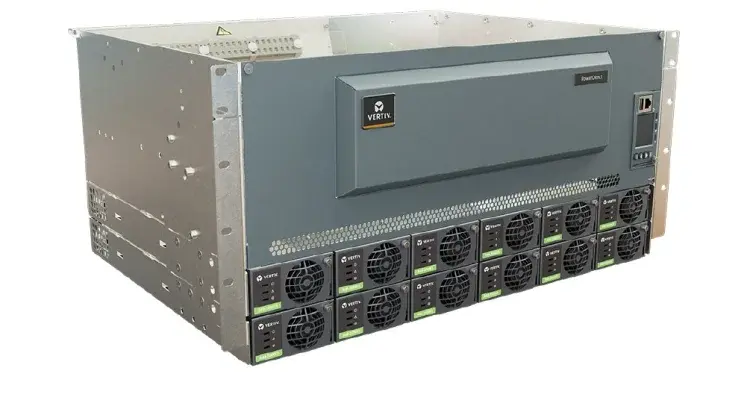During the 1990s, mobile networks became a highly profitable business. The faster the rollout, the thinking went, the quicker to market, and investment in areas like asset management and tracking may have seemed secondary when there were profits were there to be made.p>During the 1990s, mobile networks became a highly profitable business. The faster the rollout, the thinking went, the quicker to market, and investment in areas like asset management and tracking may have seemed secondary when there were profits were there to be made.
Today, with margins tighter and both competition and regulators pushing prices down, many operators are more focused than before on cost efficiency “and that's where managing your assets becomes more important”, says Arthur Noonan.
Noonan is sales manager, Europe, Middle-East and Africa at Omnix Software, a company that offers a suite of products designed to help mobile network operators realise operational efficiency across the network life cycle.
Investing effectively
While it’s clearly in the company's interests to encourage operators to invest in the solution packages that it offers – packages covering network project logistics, network asset tracking, network asset maintenance and network estates management – it’s also hard to deny that the sheer size and complexity of modern networks justifies the outlay involved in infrastructure management.
As Noonan puts it, “The number of capital assets in the network is staggering.” Even a small network in, say, Chad, could involve $50mn worth of assets, while in somewhere like Nigeria or Egypt that figure runs to billions.
And that is an essential part of the Omnix sales pitch: a five per cent saving on wastage can be a vast payback.
Here — in a very simplified form – is one example of how Omnix asset management can save on costs. Working with the rollout part of the company's software, the bill of materials required in the build-out of the site is forwarded to the Enterprise Resource Planning (ERP) system, thus facilitating the procurement of materials and definition of materials required.
When the equipment arrives, items are bar-coded – either with the vendor's bar code or the operator’s asset code (operators often prefer this as it is more visible).
“It’s the better management of expensive material assets, reduction in waste and faster project implementation with Omnix that provides the big payback for the operator,” says Noonan.
Thus, Noonan explains, when something is faulty or replaced or moved to another site to make way for new technology, “you can then assign that particular serial number to a bar-coded item onto the new site reference”.
Obviously, when things are moved around, the asset value of the site will change. In particular as new technology comes in its value will go up. Being aware of this, says Noonan, means that “from an accounting point of view you can better determine your return on investment: how much revenue you are getting as opposed to how much that asset is costing.
That gives you proper accounting in terms of your return on investment, your return on assets and so on.”
Why is this sort of accounting-friendly approach useful? Firstly, it helps to minimise duplication, waste and theft (or ensure that at least items are coded if theft occurs).
Also, says Noonan, it calms the fears of investors and insurers who may still have fresh in their minds the sort of fraud perpetrated by WorldCom.
As he says, “For your investors to trust in your stock you've got to be able to stand up to scrutiny.”
And that’s not all. “Sites are extremely dynamic, getting upgraded or downgraded — and there are changes in technology,” says Noonan. “If you don't have a current knowledge of the asset value of that site and you're relying on an initial figure that was the project value, your insurance broker is likely to err on the side of caution.” Thus you may be over-insured or, worse, the insurance value of your assets may be underestimated.
But if you can offer a precise figure and if your insurance premiums are, say between one half and one per cent of your overall costs, cutting that premium by a fifth is a useful saving. In the future the passive approach, relying on bar-coding at the right time in the process, will give way to a more active system, In fact, Omnix is now linking up with inventory management companies that can already look live into the Network Operations Centre (NOC).
The NOC approach doesn't have a role in tracking items not live in the network (passive items such as spares, antennas or diesel generators) whose whereabouts you need to know to in order to be able to compute the overall asset value of your site. However, reconciling the record held by Omnix with the inventory management system held by the partner group will offer a near real time updating of the location of many assets.
The present system offers a high degree of confidence, Noonan says, but it does rely on bar coding being carried out when and where required. The fact that all sites are visited at intervals throughout their life does help to facilitate this, of course.
Thus technicians going out to a site to perform an upgrade or repair can also be tasked to do an audit of site assets. Over time the NOC approach will further improve reliability but a longer term aim is for assets to be able to report themselves, through RFID tags.
Utilising network knowledge
In Africa, where Omnix works with Zain and MTN across multiple countries, Vodacom in South Africa, Mobinil in Egypt and Vodafone in Ghana, the operator is not the only possible client.
Firstly there's the operator itself, then there are the companies (like Ericsson or Nokia) they are paying to maintain and run the network — often in more than one country at a time. Finally there is a further level of outsourcing, the so-called ADC (Acquire, Design, Construct) companies — subcontractors employed for their local knowledge.
Usually they do civil works but sometimes their duties can extend to other areas such as diesel generators or air conditioning.
All of which may save on opex and capex from the operator's point of view but with so many different players involved also makes asset tracking much more difficult. Omnix is now tailoring asset tracking offerings for the needs of all three layers.
The mobile network management business model of today is certainly a long way from the fast rollout, fast payback days before multi-country networks and 3G.
Its multi-party, outsourced approach requires a great deal more care in asset tracking. And as a consequence it also requires the involvement of specialist companies like Omnix.
Vaughan O’Grady






















